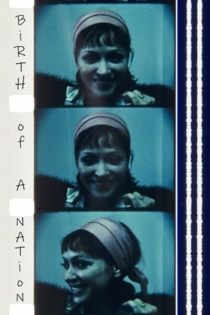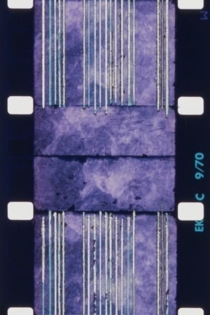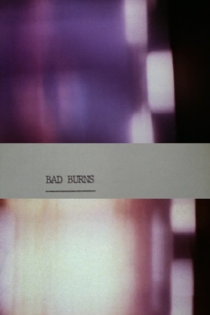
Paul Sharits
1943 - 19933rd Degree
Paul Sharits
Three-screen film. On the first screen, close-ups of an agitated match in front of a young woman's fearful face. On the soundtrack: matches, warnings of a rattlesnake, the phrase: "Listen, I will not speak." The ribbon runs at variable speeds, sometimes blurring, sometimes slowing down, to stop, on which the image / celluloid begins to fry and to burn, then leaves, runs, stops again, leaves again ... On the second screen we see the first rephotographed; here the "burns" are both fixed or new (a burn in the second degree). On the third screen, we see the second screen rephotographed. The subject of the film is the fragility of the film, as medium, as well as the vulnerability of man. Both the film and the figure resist threats / intimidation / mutilations.
3rd Degree
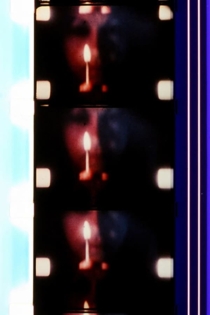
Fluxfilm Anthology 1962-1970
Mike Parr, Owen Land
Feature-length compilation program presenting 37 out of 41 original fluxfilms produced and directed in the 1960s by Fluxus artists, including George Maciunas, Nam June Paik, Yoko Ono, Robert Watts, Paul Sharits, et al.
Fluxfilm Anthology 1962-1970
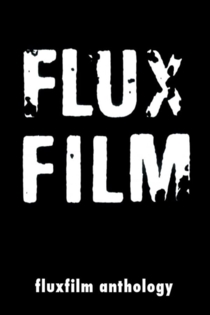
Paul Sharits
François Miron
Paul Sharits
Long after his premature death, the impact of Paul Sharits lingers on. The prominent iconoclast and innovator provoked with fast-flickering, pulsating, colourful mosaics. The many interviews and testimonies are also a portrait of a generation of leading voices in experimental filmmaking.
Paul Sharits
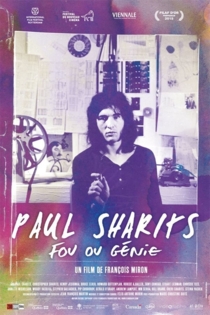
Ray Gun Virus
Paul Sharits
Paul Shartis's Ray Gun Virus (1966) is a transfixing, must-see-in-person “flicker” film that distills the cinematic experience to projected light and color patterns, allowing “the viewer to become aware of the electrical-chemical functioning of his own nervous system.”
Ray Gun Virus

Razor Blades
Paul Sharits
In Razor Blades, Paul SHARITS consciously challenges our eyes, ears and minds to withstand a barrage of high powered and often contradictory stimuli. In a careful juxtaposition and fusion of these elements on different parts of our being, usually occurring simultaneously, we feel at times hypnotised and re-educated by some potent and mysterious force.
Razor Blades

Cinématon
Gérard Courant
Gérard Courant, Alain-Alcide Sudre
Cinématon is a 156-hour long experimental film by French director Gérard Courant. It was the longest film ever released until 2011. Composed over 36 years from 1978 until 2006, it consists of a series of over 2,821 silent vignettes (cinématons), each 3 minutes and 25 seconds long, of various celebrities, artists, journalists and friends of the director, each doing whatever they want for the allotted time. Subjects of the film include directors Barbet Schroeder, Nagisa Oshima, Volker Schlöndorff, Ken Loach, Benjamin Cuq, Youssef Chahine, Wim Wenders, Joseph Losey, Jean-Luc Godard, Samuel Fuller and Terry Gilliam, chess grandmaster Joël Lautier, and actors Roberto Benigni, Stéphane Audran, Julie Delpy and Lesley Chatterley. Gilliam is featured eating a 100-franc note, while Fuller smokes a cigar. Courant's favourite subject was a 7-month-old baby. The film was screened in its then-entirety in Avignon in November 2009 and was screened in Redondo Beach, CA on April 9, 2010.
Cinématon

Wintercourse
Paul Sharits
Discovered in summer of 1985, of a set of “haiku-imagistic films” I did before coming to my characteristic style, as in Ray Gun Virus; I thought I’d destroyed all these pre-pure films, in about 1969-1970, the time of my separation from my first marriage. The film concerns my marriage, which lasted seven years; it was shot during its first year, when I was a painting student at the University of Denver. It is full of apprehensions, in a montage style which counterposes “opposites”: sexuality and religion; seasonal opposites; hopefulness undercut by fears of eventual separation (the image of a statue of two women, arm in arm, reading a book). I find it visually and kinetically interesting, after all these years. (Paul Sharits) —Canyon Cinema
Wintercourse

T,O,U,C,H,I,N,G
Paul Sharits
David Franks
T,O,U,C,H,I,N,G uses flickering frames of solid color juxtaposed with positive and negative still images of a man—sometimes cutting off his own tongue with glitter-covered scissors, sometimes suffering a series of glitter-stained fingernail scratches across the face. Other rapidly alternating still images of eye surgery and a couple in the midst of intercourse. The soundtrack is a continuous looped recording of the word "destroy" over the entire length of the film.
T,O,U,C,H,I,N,G

